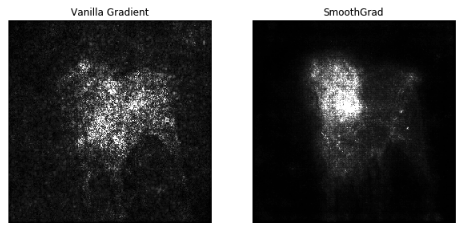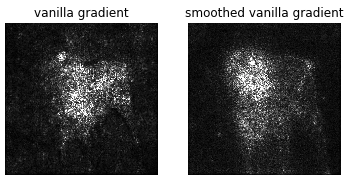You signed in with another tab or window. Reload to refresh your session.You signed out in another tab or window. Reload to refresh your session.You switched accounts on another tab or window. Reload to refresh your session.Dismiss alert
I noticed that the output gradient is pretty small (1e-14~1e-7) while much bigger (1e-8~1e-1) in the https://github.com/PAIR-code/saliency implementation.
I noticed that the output gradient is pretty small (1e-14~1e-7) while much bigger (1e-8~1e-1) in the https://github.com/PAIR-code/saliency implementation.
First, I tried this notebook: https://github.com/PAIR-code/saliency/blob/master/Examples.ipynb and output the min/max of vanilla gradient and the top 20.
np.max(vanilla_mask_3d), np.min(vanilla_mask_3d)np.sort(vanilla_mask_3d.ravel())[::-1][:20]But when I run it using deep-viz-keras with the same model and same image, the result looks like this:
np.max(mask), np.min(mask)np.sort(mask.ravel())[::-1][:20]Also, the output mask is not exactly the same.
Here's the

PAIR/saliencyversion:Here's the

deep-vis-kerasversion:Here's the notebook code to set deep-viz-keras in the same setting as PAIR/saliency. Notice I used the doberman image from the PAIR/saliency repo (https://github.com/PAIR-code/saliency/blob/master/doberman.png).
Is this a bug? I'll appreciate if anyone can take a look.
The text was updated successfully, but these errors were encountered: